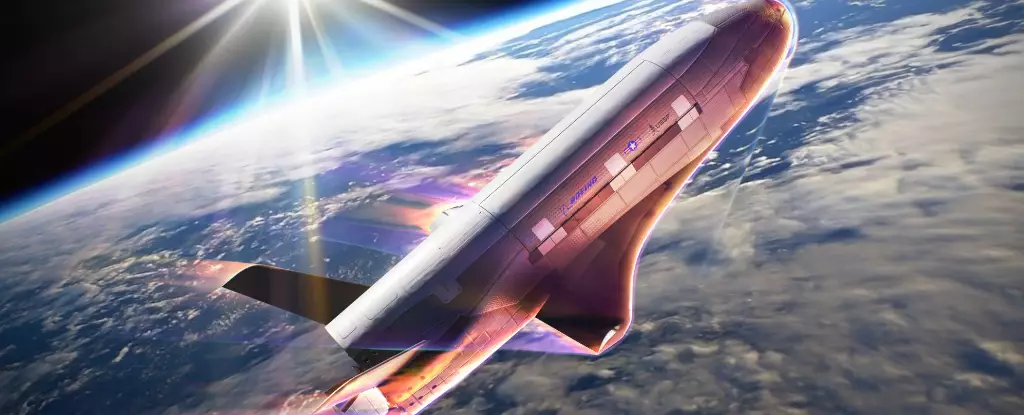The X-37B Orbital Test Vehicle (OTV) stands at the forefront of modern aerospace technology, representing a convergence of innovation and military strategy. Its operational history, dating back to its inaugural launch in 2011, paints a picture of an advanced space plane that performs tasks far beyond mere atmospheric navigation. With its seventh mission, dubbed OTV-7, launching on December 29, 2023, the air of secrecy surrounding the X-37B thickens as it embarks on a series of unprecedented experiments and maneuvers.
Developed by Boeing and utilized by the United States Space Force (USSF), the X-37B is more than just a reusable space plane; it symbolizes the US’s commitment to maintaining leadership in the domain of space. Operating in Low Earth Orbit (LEO) — within a range of 240 to 800 kilometers above the Earth — the vehicle’s design inherently allows for an agile response to the complex and evolving landscape of space operations. The USSF has articulated clear intentions of harnessing this technology not only for scientific experimentation but also for bolstering national security initiatives.
The scope of OTV-7 is particularly noteworthy, as it involves cutting-edge experimentation to assess the impact of space radiation and evaluate technologies designed for Space Domain Awareness (SDA). These objectives resonate with the larger mission of the USSF, which is to ensure safety, security, and stability in the heavily contested arena of space. However, the lack of transparency surrounding the specifics of these missions inevitably fuels speculation and intrigue.
Aerobraking: A Game-Changer in Maneuverability
Among the most significant aspects of the OTV-7 mission is the implementation of aerobraking — a novel technique initially utilized during missions to Mars. This maneuver allows the X-37B to decrease its orbital altitude by fleetingly skimming Earth’s upper atmosphere, thereby reducing speed without the extensive consumption of fuel. The audacity of this maneuver not only signifies technological advancement but also strengthens the X-37B’s operational stealth, allowing it to evade detection more effectively.
Frank Kendall, Secretary of the Air Force, hailed this innovative operation as pivotal in demonstrating the USSF’s commitment to exploring groundbreaking technologies. General Chance Saltzman, Chief of Space Operations, echoed this sentiment by framing the aerobraking maneuver as a critical evolution in the ability of the USSF to adapt to an increasingly complex domain. This progressive thrust into advanced maneuvers underscores a broader strategy of stealth and agility, giving the X-37B an edge in both military and scientific endeavors.
Analyzing the Secrets Behind X-37B’s Operations
Despite extensive discussions around the X-37B’s capabilities, much remains shrouded in mystery. Former USAF Secretary Heather Wilson remarked on the vehicle’s ability to evade detection through sophisticated orbital patterns. The unique capability to alter its trajectory in a near-invisible manner not only complicates tracking efforts by adversaries but also highlights the strategic advantages provided by advanced technology in military operations.
Jonathan McDowell, an acclaimed astronomer from Harvard, offered insight into the potential adaptive capabilities of the X-37B during a discussion that highlighted how its atmospheric dip could disrupt prediction models for ground-based trackers. This complexity enhances the operational security of the vehicle while simultaneously demonstrating the immense ingenuity embedded in its design.
As the OTV-7 mission will continue to explore uncharted territories in orbital operations, its potential impact on future missions cannot be overstated. Along with investigating the effects of radiation on biological elements, including plant seeds as part of the “Seeds-2” experiment, the vehicle’s engagement with cutting-edge technologies points to a future rich with scientific discovery and tactical advantages.
Additionally, as the X-37B prepares to eject components of its service module to comply with space debris mitigation standards, it sets a precedent for responsible space conduct, balancing innovation with environmental considerations. Once experiments conclude, the X-37B is expected to de-orbit and return to Earth, readying itself for subsequent missions, each likely cloaked in intrigue and speculation.
The journey of the X-37B OTV epitomizes the dual nature of contemporary space exploration, where military priorities and scientific curiosity are interwoven. As it continues to push the boundaries of what is possible in LEO, the implications for both national security and the broader field of space research remain profound, inviting us to ponder what lies ahead in this new era of exploration and technology.


Leave a Reply